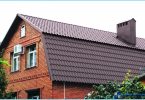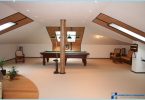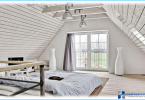The contents
Durable and reliable roof is an important element of any building. Without it is impossible a comfortable stay inside the house. A huge role in the reliability of the design plays the fastening of the rafters to the joists. This is the basis on which rests the whole roof.
How strong the connecting elements of the system, depends on the possibility of operation of the roof. It is very important to implement a proper connection of rafters to the joists.
Error during installation of the truss system in the future can result in depressurization of the entire structure, and even its collapse. Builders need to consider many factors when selecting materials and design solutions.
Building codes are a set of rules and standards used by builders in the construction of buildings. It is a kind of building code, compliance with which depends the security of the entire building.
What are compounds ↑
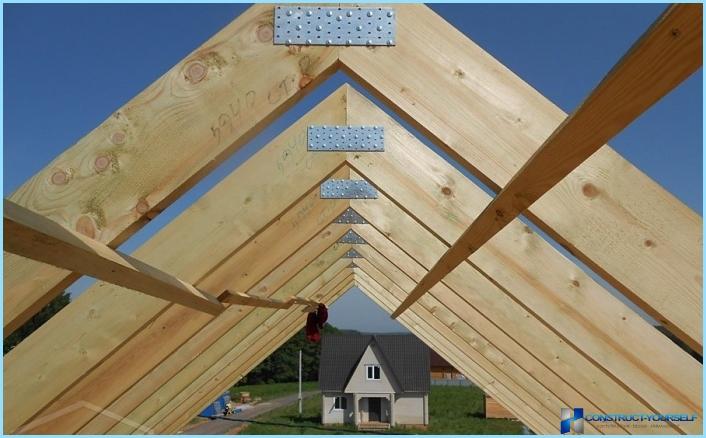
Before proceeding to the intricacies of the Assembly of the rafters to the joists or mauerlat, you need to tell a little about the types of these fasteners. We have to admit that over the millennia, the development of construction industry, there have been many materials, engineering structures and technologies of construction of buildings.
However, as a result of constant progress in most cases, using only three fixings of the rafters to the joists:
- mount the rafters that were previously extended by a special technique;
- mount the rafters to mauerlat;
- the involvement of special elements for better fixation fasteners.
The last type of fastening of the rafters to the joists allows for a higher reliability of the whole structure. When choosing the method of fixing the main task of the designer is even load distribution.
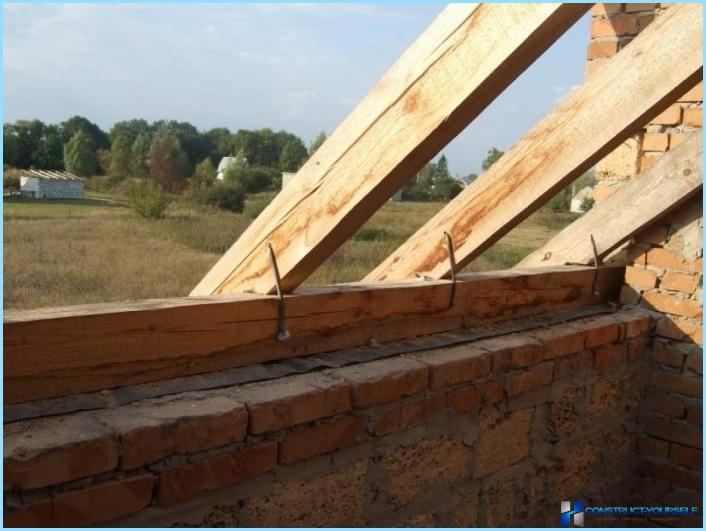
You also need to elaborate on the second paragraph. Beginners in the construction job as you go there is a natural question about the meaning of the term mauerlat. In fact it is a fat beam, which is placed parallel to the ridge. When this is done along the axis of the wall. Simply put, it keeps the whole truss system.
The most common use of mauerlat timber. The optimum cross section of 15 by 15 centimeters. When choosing timber you must take into account that it will hold the whole weight of the roof.
Mauerlat must be securely fastened to the wall. For this it is best to use studs. They need to wall in a reinforced concrete belt. You can also use the wire sufficient to secure the thickness.
Hard and sliding connection ↑
Now when you create the project of roof builders can use two types of fastening of the rafters to the joists: hard and moving. Each of them has its advantages and disadvantages. But all construction experts are of the opinion that everyone has optimal conditions of use.
Rigid fixation ↑
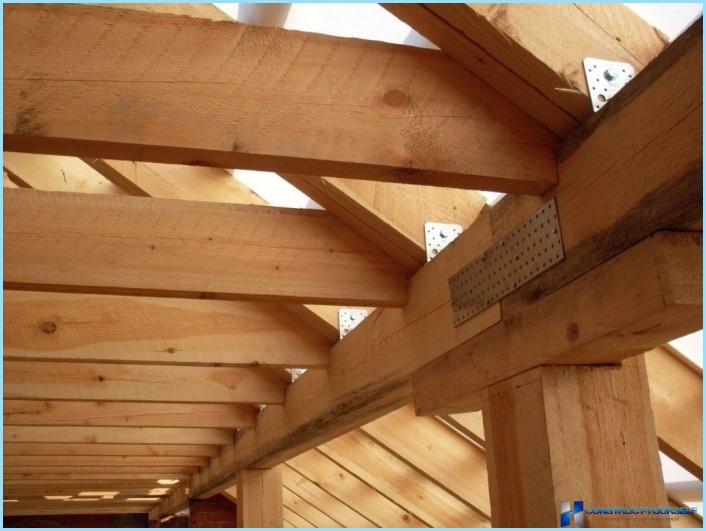
For rigid attachment of the rafters to the joists or mauerlat you must use the sloped rafters. It is very important to put the truss leg to the bar. No effort on the part of the builders to be should not.
There are several ways to achieve the desired rigidity of fastening of the rafters to the joists. For example, you can make Urubko on the rafter leg. This will provide sufficient structural strength and reliability. There is also the option of using stripe retaining timber. As a base used the rafter.
To secure the rafters to wrbcam of mauerlat or floor joists have to do basting. Act better on a pre-established template. It is very important that the depth of the holes does not exceed one third of the beam.
Each rafter should be fixed with two nails. At the same time to score they need from the rafter boards. The third nail is hammered vertically, the previous two at an angle. Such method of fixation allows to guarantee the strength and rigidity of the fastening of the rafters to the beam ceiling or mauerlat.
According to the construction standards, the cutting may be carried out only in the rafters. If you make a hole in the mauerlat — it can negatively affect the strength of the whole structure.
There is another method of attachment. According to him, it is necessary to use additional timber. Moreover, its length cannot exceed one meter. It is attached to the rafter leg.
To secure the bar it is necessary to use metal corners. Their main task is to prevent shear. Therefore, all designers are professional builders use these elements.
Movable connection ↑
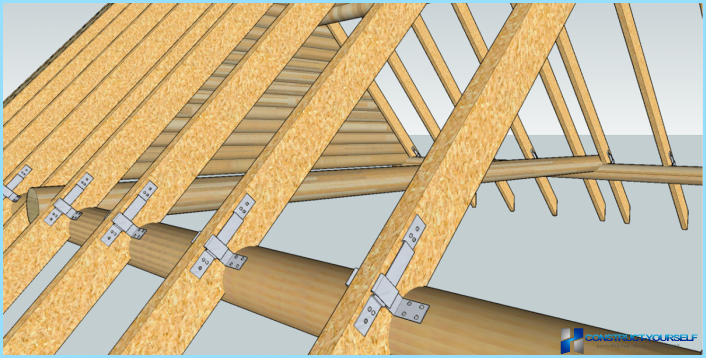
Such a connection is necessary in homes in which natural shrinkage is about eight percent during the first two years after construction. Usually this is characteristic of buildings constructed entirely of timber.
The slip joint consists of two strips which are attached to the joists and mauerlat. In contrast to the rigid connection this design is intended for a certain backlash. Therefore, when the building shrinks not happening depressurization.
What are fixing ↑
Of course, a huge part of creating a roof mount play. But there is a huge variety of elements, each of which is optimal for use in certain conditions. In the modern construction industry use these fasteners:
- screws,
- steel angles,
- tie,
- bolts and nuts,
- brackets,
- mounting tape.
Each of these fasteners has its own peculiarities of use. Take as an example brackets. If you use them, the box on the rafters do not necessarily. As a result, the strength of the whole structure will increase.
Design ↑
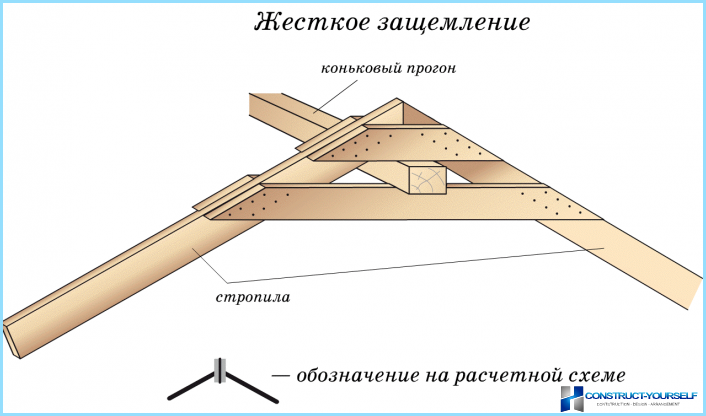
Design is a very important stage of construction. It made drawings, selected materials and fixing rafters to beams of overlappings. It is very important at this stage to calculate wind and snow loads. From the calculations will depend on the weight of the entire system.
At the design stage of the roof and fastening the rafters to the joists it is necessary to consider the bearing capacity of the walls. If you make the roof too heavy, the entire building could collapse in a moment.
There are a number of factors that must be considered when designing the roof and fastening the rafters to the joists:
- the roof shape,
- roofing material,
- the layout of the internal supports,
- the system of rafters,
- the angle of slope of the roof,
- the length from one wall to another.
These parameters primarily affect the design of the roof and fastening the rafters to the joists.
How to fasten the rafters to the joists ↑
The load elements of the roof in this design is targeted. In this case the beams must be 40 centimetres outside the box. At their ends to penetrate the recesses. In them are inserted the truss bars.
To provide a reliable overlap it is necessary exactly to put all the cross member. For this you will need string. It’s necessary to stretch to the extreme elements of the design. The rafters need to be fixed the metallic elements.
The connection of the rafters and the ridge part ↑
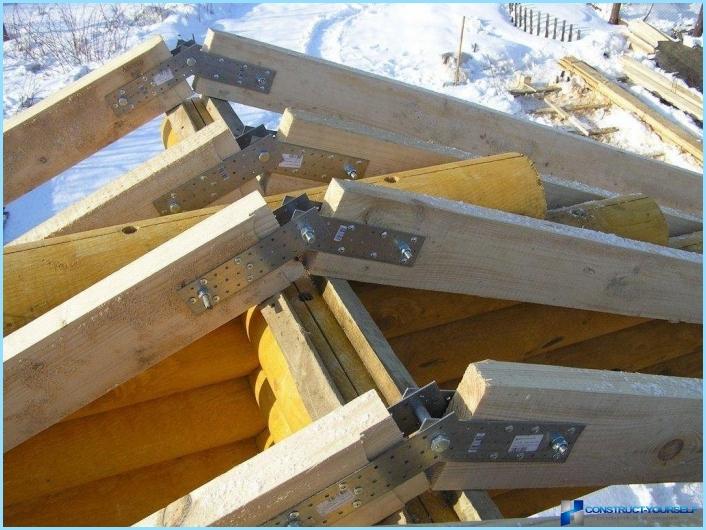
This is one of the most important stages of creating a reliable roof. In modern architecture there are three types of ports:
- Butt. Each bar of the structure to be trimmed at an angle. It needs to match the angle of the roof. It is better to make a basic template that will fit all items.
- Run. Rafter feet are joined timber ridge.
- Overlap. Rafter feet are joined side-to-side. As the fixing elements are bolts.
In most cases, use the third option to create a reliable overlap.
The results ↑
Truss connections play an important role in the creation of slabs. The right choice of elements, materials and design methods allows you to create a solid roof with a long lifetime.

